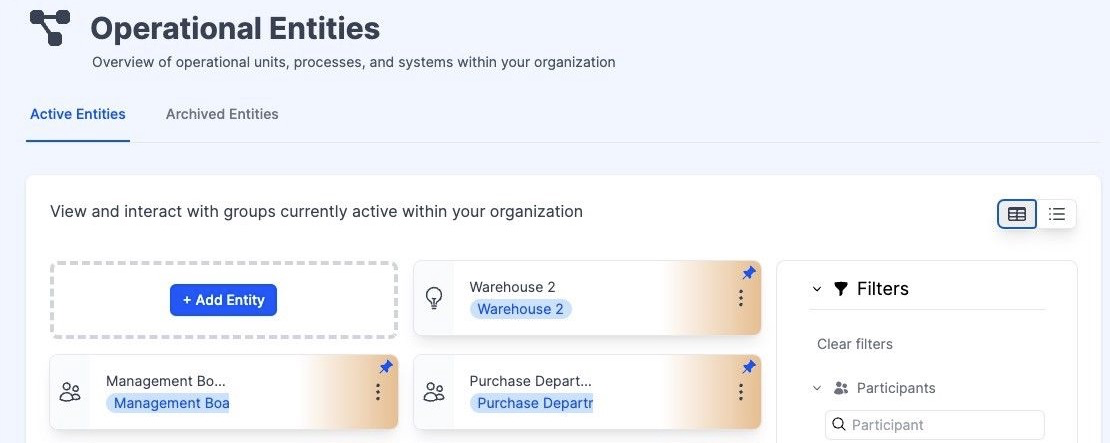Mapping Your Organization with Operational Entities

1. Introduction
Operational Entities within RiskStudio serve as the backbone for mapping out the complex structure of your organization. This foundational feature allows you to define and manage the critical functional components of your organization, such as departments, teams, IT systems, core business processes, key assets, and projects. The meticulous identification and definition of these entities are crucial for gaining a clear understanding of where potential risks might arise and which areas require focused attention for risk management.
2. Importance of Operational Entities
The strategic mapping of your organization through Operational Entities is vital for several reasons:
Holistic Risk View: It provides a comprehensive perspective on your organizational landscape, highlighting potential risk points across various operational components.
Targeted Risk Management: With a clear view of each entity's role and function, risk management strategies can be tailored to address specific vulnerabilities or challenges, making your risk management efforts more precise and effective.
Enhanced Collaboration: By associating participants with specific entities, collaboration is fostered across different parts of the organization, ensuring that each entity is adequately monitored and managed.
3. Architecting Your Organizational Blueprint
Operational Entities within RiskStudio are the linchpins in architecting a comprehensive blueprint of your organization's structure and operational dynamics. This chapter delves into the critical steps involved in setting up and configuring these entities, which are integral to understanding the intricate web of your organizational components. By accurately mapping out departments, teams, projects, and other key areas, you can achieve a granified view of where risks may emerge and how they can be effectively managed.
3.1 Setting Up Operational Entities
The setup of Operational Entities is the first step in creating a structured representation of your organization within RiskStudio. This process involves defining the core components that make up your organization, from departments and teams to projects and IT systems. The accurate establishment of these entities is fundamental to identifying where risks might originate and ensuring that each area of your organization is adequately covered in your risk management strategy.
Key actions
- Adding New Entities: Hit the "Add Entity" button on the main screen on the Operational Entities' page and fill in the details such as the entity's full name, short name, and its primary purpose or function. The type of entity—be it a Project, Process, Department, or Information System—needs to be selected carefully as it defines the nature and scope of the entity within your organizational framework.
More information
3.2 Configuring Operational Entities
Configuring Operational Entities extends beyond their initial setup, involving the integration and detailed customization of each entity. This phase is crucial for operationalizing your risk management framework, as it allows for the linking of relevant companies from your Cyber Chain and the assignment of responsible individuals to each entity. This ensures that your organization's structure is not only clearly defined but also dynamically connected to your external business environment and supported by a clear accountability structure.
Key actions
- Linking Companies: Utilize the 'Change Companies' button to integrate companies from your Cyber Chain into each operational entity. This integration is essential for a holistic view of how external entities influence or are connected to various parts of your organization, providing insights into potential risk exposures and collaborative dynamics.
- Assigning Participants: The 'Change Involved Participants' button allows you to add existing or new participants to each entity, ensuring that every operational component has designated individuals responsible for its management.
More information
3. Maximizing the Potential of Operational Entities
To fully leverage the Operational Entities feature in RiskStudio, it's important to regularly update and configure these entities (and related companies in the Cyber Chain) to reflect ongoing projects and organizational changes. This dynamic approach ensures that your risk management strategies remain accurate and effective, aligning with the evolving structure and objectives of your organization.
Mapping your organization with Operational Entities is a critical step in RiskStudio, providing the clarity and structure needed to manage risks effectively. By following these key actions, you can ensure a comprehensive understanding of your organizational landscape and a targeted approach to risk management.
4. Related pages

